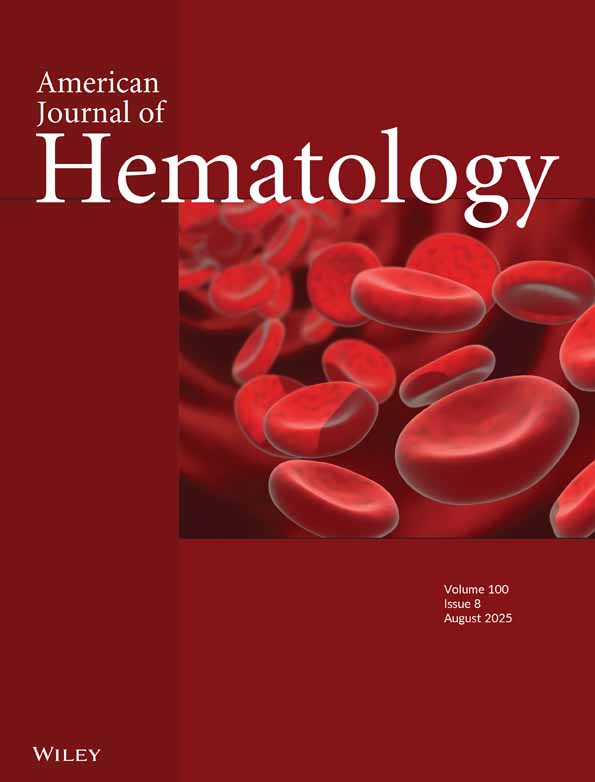Increased levels of soluble ICAM-1 in the plasma of sickle cell patients are reversed by hydroxyurea
Abstract
Increased adhesive events between the blood vessel endothelium and red and white cells play a central role in the initiation of vasoocclusive crisis in sickle cell disease (SCD). Soluble VCAM-1 levels are increased in the plasma of sickle cell patients and may be reduced during hydroxyurea (HU) therapy. Reports regarding any changes in soluble ICAM-1 (sICAM-1) levels in sickle cell patients, however, are conflicting, and as yet no beneficial effect of HU upon levels has been observed. Thus, we sought to thoroughly investigate changes in sICAM-1 levels in SCD patients and the effect of HU therapy (20–30 mg/kg/day). Plasma sVCAM-1 levels were significantly higher in steady-state SCD patients than in normal controls (766 ± 86 ng/mL vs. 325 ± 38 ng/mL, respectively, P < 0.0001). sVCAM-1 levels were decreased in patients on HU therapy (543 ± 69 ng/mL) compared to those not taking HU; however, this difference was not significant. Plasma sICAM-1 levels were significantly increased in steady-state SCD patients compared to normal individuals (285 ± 20 ng/mL vs. 202 ± 16 ng/mL, respectively, P = 0.002), and HU therapy significantly reduced sICAM-1 levels in patients (217 ± 12, P = 0.027) to levels approaching those of healthy individuals. sVCAM-1 levels inversely correlated with fetal hemoglobin levels in SCD patients, while a nonsignificant inverse trend was observed between sICAM-1 levels and fetal hemoglobin. In conclusion, plasma sICAM-1 levels were significantly increased in SCD patients, and this increase was reversed by hydroxyurea therapy, possibly reflecting reduced endothelial activation in patients taking HU. Such an event may benefit patients by reducing adhesive interactions between white cells and the endothelium. Am. J. Hematol. 76:343–347, 2004. © 2004 Wiley-Liss, Inc.




